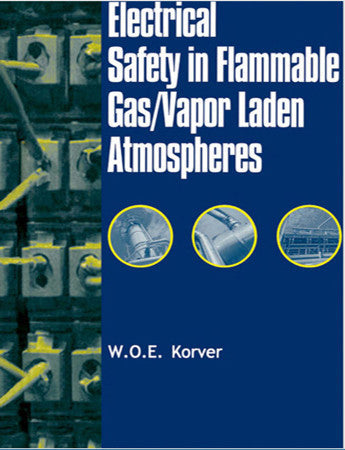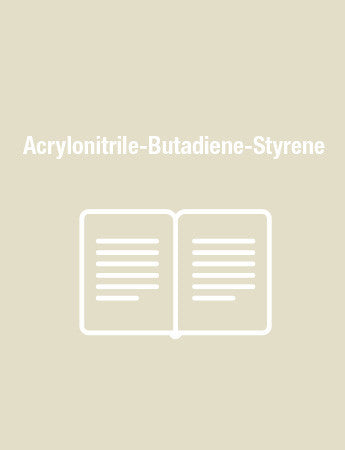Electrical Safety in Flammable Gas/Vapor Laden Atmospheres
The purpose of this publication is to make readers aware of the explosion danger that may exist when they are involved in the use of flammable gases and liquids that are stored, processed, or transported in facilities with electrical wiring and equipment. Compliance with the electrical power recommendations in here will essentially provide a safe environment, which is a fundamental prerequisite in controlling injuries and damage to properties.
One intent of this publication is to provide an in-depth understanding of the factors that influence the classification of a hazardous location. One factor, in combination with one or more other factors, will have an impact on the level of danger and its hazardous boundaries. These factors and their influences are explained in detail in this publication, and once their impact is understood, the classification of a hazardous location becomes a straightforward procedure. The purpose of classification of a hazardous location is to provide safety for personnel and equipment. Another intent of this book is to achieve an electrical installation that will provide an acceptable level of safety for personnel and equipment at the lowest possible cost. To accomplish this, it is necessary to analyze in detail the environmental conditions of the location and the characteristics of the source of hazard.
The engineer who is involved in preparing the area classification must understand all of the details that will impact on his decision to classify the area Division 1, Division 2, or non-hazardous. Without a knowledge of the environmental conditions and the characteristics of the source of hazard, he, most certainly, will give the location a safety level much too high, which is not economically justifiable, or a level too low, which is unsafe. It is this approach that must be avoided.
In nine out often cases, a hazardous location is classified much too conservatively. The reasons for this conservative approach are a lack of knowledge and a misunderstanding of the actual concept of safety and danger. In the majority of cases, hazardous areas are classified Division I when the location could have been classified Division 2, and areas which are classified Division 2 could have been classified non-hazardous. In other cases, the location is classified non-hazardous when it should have been classified Division 1 or Division 2. It must be kept in mind that a location classified Division 1 requires explosion-proof equipment, which ranges in price from two to four times the cost of general-purpose electrical equipment, some of which are allowed in Division 2 locations. Therefore, it is important to strive to achieve a classification of a lower yet acceptable level of safety, which is commensurate with an acceptable risk and reduces the cost of electrical installations.
To establish such a point, it is necessary to evaluate the characteristics of the flammable products, along with the conditions under which the product must operate. By listing this information on appropriate forms, the evaluation of the degree of hazard and its boundaries can be correctly performed, and, as a result, the proper electrical equipment can be selected under the provisions of the NEC.
A total of 126 tables and illustrations have been developed to assist the engineer in establishing the degree of danger and its boundaries for locations with flammable products.
This publication is divided into three parts with an appendix. Part I discusses the flammable and combustible principles of hazardous products and other pertinent information associated with an area classification. Part 2 discusses the environmental conditions in hazardous locations. A number of specific illustrations are included in this section. Part 3 discusses the application procedure for classifying NEC Class I locations. Examples are also included in this section. Following these sections is an appendix listing properties of flammable liquids, gases, and vapors.
The application of the information explained herein is mainly for flammable liquids, vapors, and gases that are processed, handled, stored, and/or transported. A small portion of this publication explains the classification of coal handling facilities.
One intent of this publication is to provide an in-depth understanding of the factors that influence the classification of a hazardous location. One factor, in combination with one or more other factors, will have an impact on the level of danger and its hazardous boundaries. These factors and their influences are explained in detail in this publication, and once their impact is understood, the classification of a hazardous location becomes a straightforward procedure. The purpose of classification of a hazardous location is to provide safety for personnel and equipment. Another intent of this book is to achieve an electrical installation that will provide an acceptable level of safety for personnel and equipment at the lowest possible cost. To accomplish this, it is necessary to analyze in detail the environmental conditions of the location and the characteristics of the source of hazard.
The engineer who is involved in preparing the area classification must understand all of the details that will impact on his decision to classify the area Division 1, Division 2, or non-hazardous. Without a knowledge of the environmental conditions and the characteristics of the source of hazard, he, most certainly, will give the location a safety level much too high, which is not economically justifiable, or a level too low, which is unsafe. It is this approach that must be avoided.
In nine out often cases, a hazardous location is classified much too conservatively. The reasons for this conservative approach are a lack of knowledge and a misunderstanding of the actual concept of safety and danger. In the majority of cases, hazardous areas are classified Division I when the location could have been classified Division 2, and areas which are classified Division 2 could have been classified non-hazardous. In other cases, the location is classified non-hazardous when it should have been classified Division 1 or Division 2. It must be kept in mind that a location classified Division 1 requires explosion-proof equipment, which ranges in price from two to four times the cost of general-purpose electrical equipment, some of which are allowed in Division 2 locations. Therefore, it is important to strive to achieve a classification of a lower yet acceptable level of safety, which is commensurate with an acceptable risk and reduces the cost of electrical installations.
To establish such a point, it is necessary to evaluate the characteristics of the flammable products, along with the conditions under which the product must operate. By listing this information on appropriate forms, the evaluation of the degree of hazard and its boundaries can be correctly performed, and, as a result, the proper electrical equipment can be selected under the provisions of the NEC.
A total of 126 tables and illustrations have been developed to assist the engineer in establishing the degree of danger and its boundaries for locations with flammable products.
This publication is divided into three parts with an appendix. Part I discusses the flammable and combustible principles of hazardous products and other pertinent information associated with an area classification. Part 2 discusses the environmental conditions in hazardous locations. A number of specific illustrations are included in this section. Part 3 discusses the application procedure for classifying NEC Class I locations. Examples are also included in this section. Following these sections is an appendix listing properties of flammable liquids, gases, and vapors.
The application of the information explained herein is mainly for flammable liquids, vapors, and gases that are processed, handled, stored, and/or transported. A small portion of this publication explains the classification of coal handling facilities.
CONTENTS
Flammable and Combustible Principles of Hazardous Products
Classifying Sources of Hazard
The Extent of Explosion Danger for NEC Class I Locations
Spatial Considerations
The Degree of Explosion Danger for NEC Class II Locations
Ventilation Requirements
Electrical Equipment for NEC Class I Locations
Electrical Equipment for NEC Class II, Group F Locations
Intrinsically Safe Equipment and Wiring
Installation of Electrical Instruments in Hazardous Locations
Hydrogen Gas
Cathodic Protection
Static Electricity
Grounding of Tanks, Pipelines, and Tank Cars
Grounding Requirements for Electrical Equipment
Application of Seals in NEC Class I Locations
Application of Seals in NEC Class II Locations
Application of Fundamentals (General Requirements for Groups A-K)
Examples
Properties of Flammable Liquids, Gases and Vapor
Flammable and Combustible Principles of Hazardous Products
Classifying Sources of Hazard
The Extent of Explosion Danger for NEC Class I Locations
Spatial Considerations
The Degree of Explosion Danger for NEC Class II Locations
Ventilation Requirements
Electrical Equipment for NEC Class I Locations
Electrical Equipment for NEC Class II, Group F Locations
Intrinsically Safe Equipment and Wiring
Installation of Electrical Instruments in Hazardous Locations
Hydrogen Gas
Cathodic Protection
Static Electricity
Grounding of Tanks, Pipelines, and Tank Cars
Grounding Requirements for Electrical Equipment
Application of Seals in NEC Class I Locations
Application of Seals in NEC Class II Locations
Application of Fundamentals (General Requirements for Groups A-K)
Examples
Properties of Flammable Liquids, Gases and Vapor
With a Master's Degree in electrical power engineering, W.O.E. Korver has over 15 years experience in construction and electrical installation design for chemical, petrochemical, fossil fuel and nuclear power plants, and has over 30 years experience in classifying hazardous areas. He is Senior Safety Engineer, Jet Propulsion Laboratory, California Institute of Technology.




